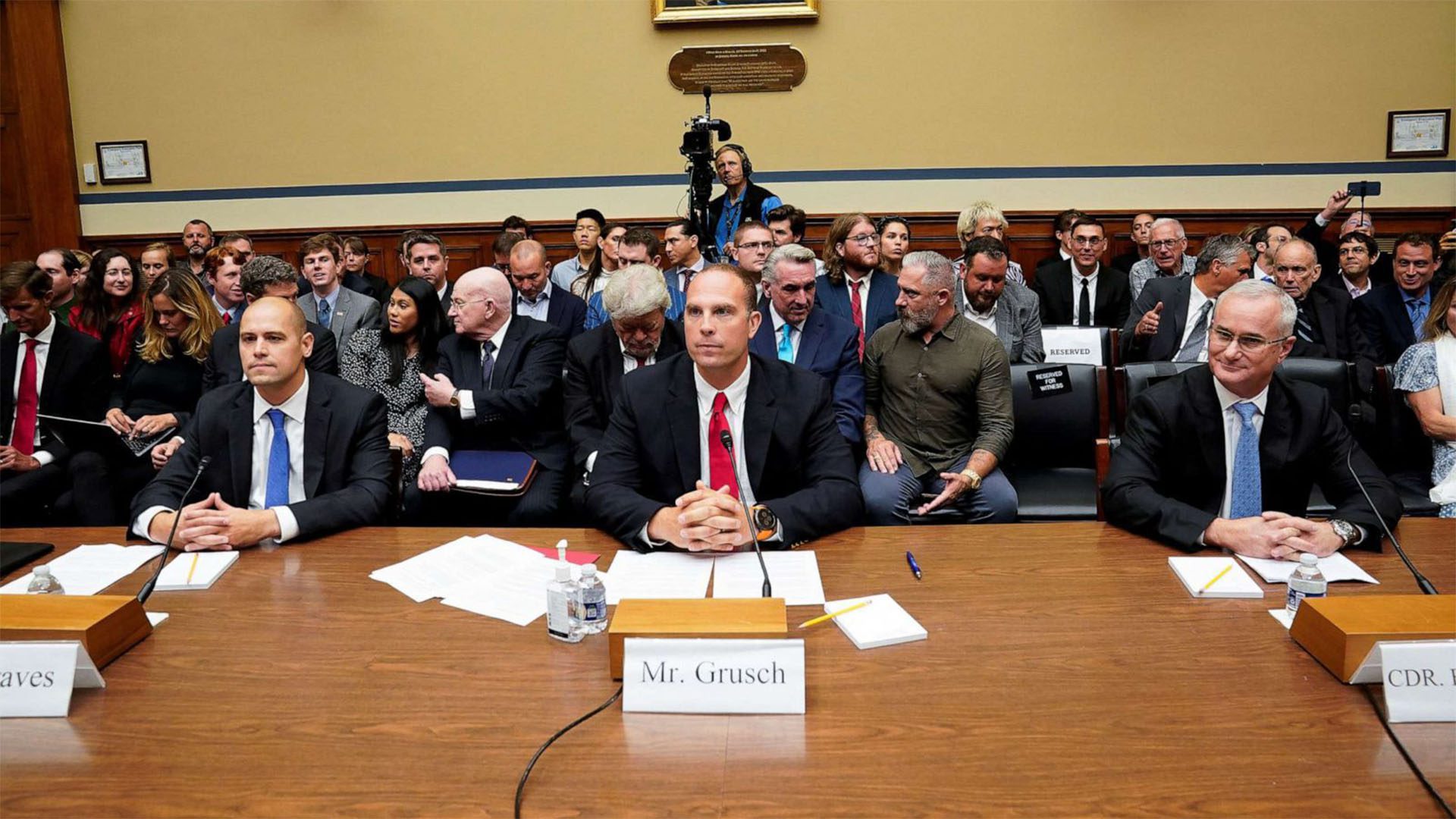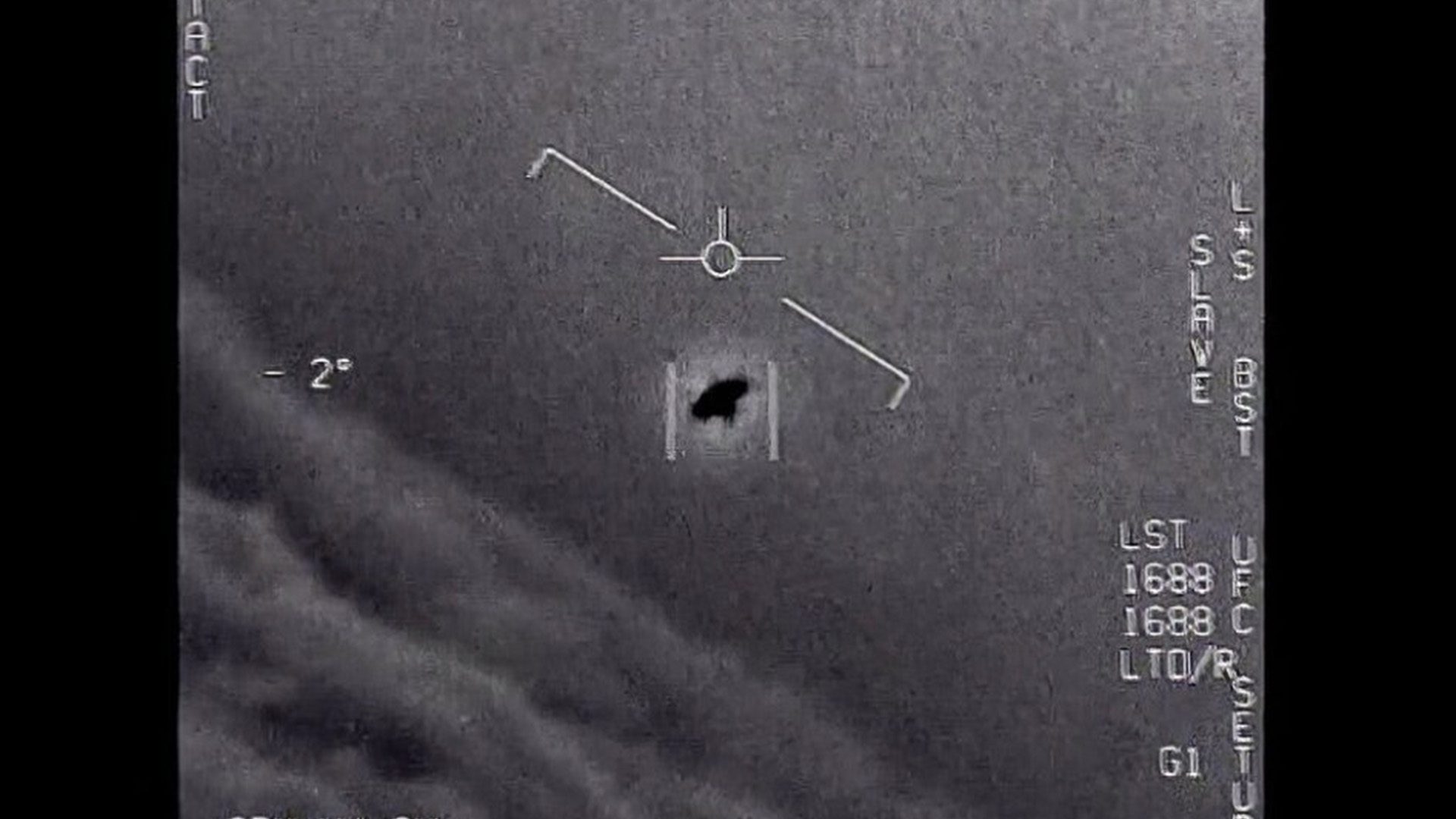A House Oversight subcommittee recently held a hearing on UFOs and heard testimony regarding government possession of “nonhuman” biological matter and the potential existence of aircraft with technology far beyond human capabilities. Here are some of the top takeaways from the hearing.
“The sheer number of reports, whistleblowers, and stories of unidentified anomalous phenomena should raise real questions and warrant investigation and oversight. And that’s why we are here today,” Rep. Robert Garcia said in his opening statement. “UAPs, whatever they may be, may pose a serious threat to our military or civilian aircraft. And that must be understood.”

1) UFO spotted accelerating to “supersonic speeds”
Former Navy commander, David Fravor, stated that he and three fellow military pilots spotted a white Tic-Tac-shaped object in 2004, hovering below their jets just above the Pacific Ocean.
He claims that, as he descended to inspect the sighting, the unidentified aircraft began to approach his fighter jet. The aircraft, which reportedly had no visible wings, exhaust, or rotors, then disappeared and reappeared a few seconds later approximately 60 miles away.
Fravor stated that he and his team were baffled by the technology they witnessed, “I think what we experienced was, like I said, well beyond the material science and the capabilities that we had at the time, that we have currently or that we’re going to have in the next 10 to 20 years.”
2) The Government is “absolutely” in possession of UAPs
Former U.S. intelligence official, David Grusch, told the committee that he is “absolutely” certain that the federal government is in possession of UAPs. To back up his claims, Grusch cited interviews that he claims to have conducted with 40 witnesses over a four-year period.
Grusch states that he led the Defense Department’s efforts to analyze reported UAP sightings and had knowledge of a “multidecade” Pentagon program that endeavored to collect and reconstruct crashed UAPs.
When asked how this program had been funded, Grusch claimed that the effort is bankrolled by a “misappropriation of funds.”

3) “Nonhuman biologics” were discovered at a crash site
Though Grusch stated that he has not personally spotted a UAP, he reportedly knows of “multiple colleagues” who were injured by UAPs and has interviewed individuals who have recovered “nonhuman biologics’ from crashed UAPs.
When asked by Rep. Eric Burlison to substantiate the crashed UAPs claim, Grusch said he could not divulge specific details but did describe the nature of what he saw, stating, “I have to be very careful here … [but] what I personally witnessed, myself and my wife, was very disturbing.”

4) Government urged to establish channels for reporting UAP sightings
Ryan Graves, a former Navy pilot, also told the panel that commercial airline pilots have spotted UAPs while urging the panel to establish clear channels to communicate UAP information with both the public and the military.
Additionally, witnesses and lawmakers argued that the stigma associated with reporting UFO sightings, including alleged harassment of those who investigate them, may be hindering efforts to determine their origins.
The Federal Aviation Administration currently has no mechanism in place for pilots to report UAPs, instead directing them to civilian groups which are often dismissed as conspiracy theorists. Lawmakers stated that they hoped the hearing itself would serve as a way of assuaging pilots’ fear of speaking out regarding UAP sightings.
Graves has established a group to push for policy changes and more disclosure by the military and government agencies, serving as a hub for pilot whistleblowers and advocates. If the government is able to establish more transparency and research surrounding this topic, particularly in regard to the discovery of other-worldly technology, perhaps someday the world of innovation could become the universe of innovation.
“This hearing will not be the end of this discussion, but a new chapter and start. We should encourage more reporting and more study of UAPs,” Garcia said. “The more we understand, the safer we are.”







